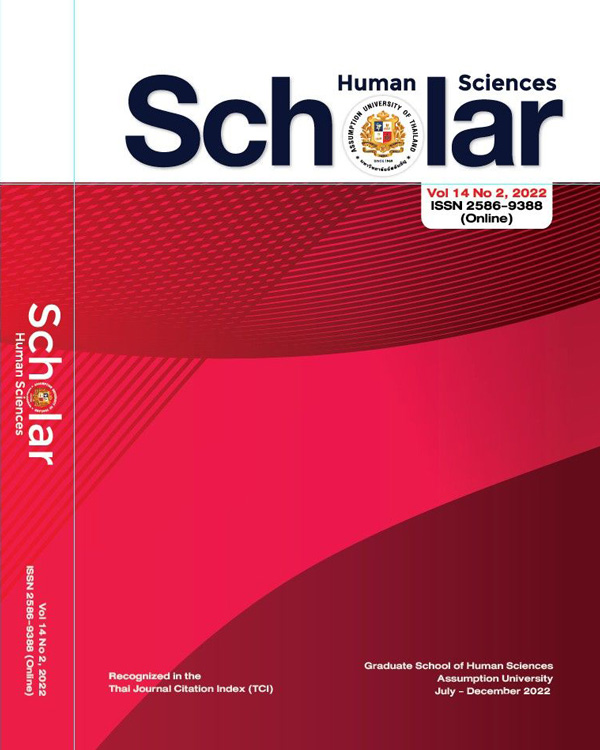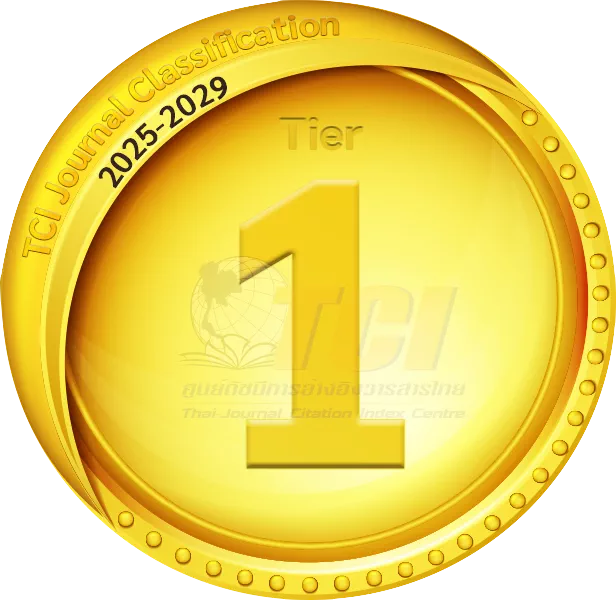A CORRELATIONAL-COMPARATIVE STUDY OF GRADE 4, GRADE 5, AND GRADE 6 STUDENTS’ SELF-EFFICACY FOR LEARNING AND PERFORMANCE IN INTEGRATED SUBJECTS WITH THEIR ACADEMIC ACHIEVEMENT IN A MOTHER TONGUE-BASED MULTILINGUAL EDUCATION CONTEXT IN 5 SJN-CBE SCHOOLS IN
Keywords:
Self-efficacy for learning and performance in integrated subjects, academic achievement, mother tongue-based multilingual education context, Northern Shan State, MyanmarAbstract
The purpose of this quantitative study was to investigate whether there was a significant relationship between self-efficacy for learning and performance in integrated subjects of Grade 4, Grade 5, and Grade 6 students and their academic achievement in 5 SJN-CBE Schools, Northern State, Myanmar. An adapted version of the Motivated Strategies for Learning Questionnaire by Pintrich, Smith, Gracia, and McKeachie (1991) was used to collect data from a total of 433 students; 117 Grade 4 students, 159 Grade 5 students, and 157 Grade 6 students. The subjects' final assessment results were used to determine the integrated subjects' academic achievement levels. The researcher also compared the self-efficacy for learning and performance in integrated subjects among Grade 4, Grade 5, and Grade 6 students. Descriptive statistics (means and standard deviations) and statistical hypothesis testing (correlational analysis using Pearson product-moment correlation and one-way ANOVA) were used to analyze the data. The research findings indicated high levels of self-efficacy for learning and performance in integrated subjects of Grade 4, Grade 5, and Grade 6. The integrated subject's final assessment result revealed that grade 4, Grade 5, and Grade 6 students had good academic achievement. Pearson product-moment correlation suggested that self-efficacy for learning and performance in integrated subjects of Grade 5 and grade 6 students and their academic achievement were significantly positively correlated; in contrast, there was no significant relationship between students' self-efficacy for learning and performance in integrated subjects of Grade 4 students and their academic achievement. The findings indicated a significant
1 M.Ed. in Curriculum & Instruction, Principal, Church-Based Education Shan State Kachin Baptist Union, Loihkang Road, Kawnghka, Kutkai, Northern Shan State, Myanmar. jarhtoidin5@gmail.com
2 Ph.D., Assistant Professor, Graduate School of Human Sciences, Assumption University, Thailand. richardlynch2002@yahoo.com
187
Scholar: Human Sciences, ISSN 2586-9388, Vol.14 No.2 (Jul.-Dec. 2022)
difference in self-efficacy for learning and performance in integrated subjects between Grade 4 and Grade 5. Still, there was no significant difference between Grade 4 and Grade 6 students and between Grade 5 and Grade 6 students. Recommendations for students, teachers, parents, implementers and administrators of SJN-CBE, and future researchers are provided.
References
Alexander, & González, O. R. G. (2018). A correlational study of self-efficacy and perceived parental encouragement for learning English as a foreign language with English academic achievement of batch 5 and batch 6 students at Level Up Academy, Loikaw Township, Kayah State, Myanmar. Scholar: Human Sciences, 12(2), 154-168.
Arslan, A. (2012). The predictive power of the sources of primary school students' self-efficacy beliefs on their self-efficacy beliefs for learning and performance. Educational Sciences: Theory & Practice, 12(3), 1915-1920.
Bandura, A. (1977). Self-efficacy: Toward a unifying theory of behavior change. Psychological Review, 84(2), 191-215.
Bandura, A. (1978). The self-system in reciprocal determinism. American Psychologist, 33(4), 344-358. Bandura, A. (1986). Social foundations of thought and action: A social cognitive theory. Englewood Cliffs, NJ: Prentice-Hall.
Bandura, A. (1989). Social cognitive theory. In R. Vasta (Ed.), Annals of Child Development, six theories of child development, Vol.6, pp. 1-60). Greenwich, CT: JAI Press.
Bandura, A. (1993). Perceived self-efficacy in cognitive development and functioning. Educational Psychologist, 28(2), 117- 148.
Bandura, A. (1994). Self-efficacy. In V. S. Ramachandran (Ed.). Encyclopedia of Human Behavior, (Vol.4, pp. 71-81) New York: Academic Press.
Bandura, A. (1997). Self-efficacy: The exercise of control. New York: Freeman. Bryant, S. K. (2017). Self-efficacy sources and academic motivation: A qualitative study of 10th graders. (Doctoral dissertation, East Tennessee State University, Johnson City, Tennessee, The United States). Retrieved from https://dc.etsu.edu/etd/3231
Scholar: Human Sciences, ISSN 2586-9388, Vol.14 No.2 (Jul.-Dec. 2022)
Cummins, J. (2000). Language, Power, and Pedagogy: Bilingual Children in the crossfire. Clevedon: Multilingual Matters.
Huang, L., & Lynch, R. (2017). A correlational-comparative study of self-efficacy for learning Chinese as a foreign language Chinese academic achievement of Grades 6-10 students according to their Chinese language proficiency levels at a trilingual international school in a Samut-Prakarn, Thailand. Scholar: Human Sciences, 11(2), 56-74.
June, Z., & Eamoraphan, S. (2019). The relationship of attitudes toward mathematics and mathematics self-efficacy with mathematics achievement of grade 10 students at A Len Bum IDPS High School in Kachin State, Myanmar. Scholar: Human Sciences, 11(2), 180-195.
Malone, S. (2016). MTB MLE for sustainable development for all: What have we learned? (and what comes next?), 5th International Conference on Language and Education: Sustainable Development Through Multilingual Education, Bangkok, Thailand, October 2016 [Power Point Presentation]
Malone, S. (2018). MTB MLE resource kit: Including the excluding the excluded: promoting multilingual education. Bangkok: UNESCO.
Margolis, H., & McCabe, P. P. (2006). Improving self-efficacy and motivation:
What to do, what to say. Intervention in School and Clinic, 41(4), 218-227.
Perez, E. D., & Ye, Y. (2013). The relationship between mathematics self-efficacy and mathematics achievement of Mathayomsuksa students in the English program of ST. Joseph Bangna School. Scholar, 5(2), 82-92.
Pintrich, P.R., Smith, D.A.F., Garcia, T., & McKeachie, W.J. (1991). A manual for using the Motivated Strategies for Learning Questionnaire (MSLQ). National Center for Research to Improve Post-Secondary Teaching and Learning. (Ann Arbor, Michigan). The University of Michigan, Ann Arbor, Michigan 48109-1259 (313)936-274. Premsrirat, S. (2019). Patani Malay – Thai Mother Tongue Based Bi/Multilingual Education in Thailand's 4 Southern Border Provinces. Retrieved From https://op.mahidol.ac.th/ra/en/2019/10/24/lc-04-2/
SJN-CBE. (2014, October). Education framework and 20 years strategic plan (2014 to 2034).
Scholar: Human Sciences, ISSN 2586-9388, Vol.14 No.2 (Jul.-Dec. 2022)
UNESCO. (1990). World Declaration on Education for All: Meeting Basic Learning Needs. Paris UNESCO.
UNESCO. (2000). World Education Forum. The Dakar Framework for Action.
UNESCO. (2010). EFA Global Monitoring Report 2010. Reaching the Marginalized.
UNESCO. (2015). Education 2030: Incheon declaration and framework for action: Towards inclusive and equitable quality education and lifelong learning for all, World education forum, Incheon, Korea R, 2015
United Nations. (2013, September). We can end poverty: The millennium development goals and beyond 2015.
United Nations. (2015). Transforming our world: The 2030 agenda for sustainable development.
Wisbey, M. (2017). Mother tongue-based multilingual education: the key to unlock SDG4: quality education for all, International conference on language and education [Power Point presentation]. Sustainable development through Multilingual education, 5th, 2016, Bangkok. UNESCO.
Downloads
Published
How to Cite
Issue
Section
License
The submitting author warrants that the submission is original and that she/he is the author of the submission together with the named co-authors; to the extend the submission incorporates text passages, figures, data, or other material from the work of others, the submitting author has obtained any necessary permission.
Articles in this journal are published under the Creative Commons Attribution License (CC-BY What does this mean?). This is to get more legal certainty about what readers can do with published articles, and thus a wider dissemination and archiving, which in turn makes publishing with this journal more valuable for you, the authors.




